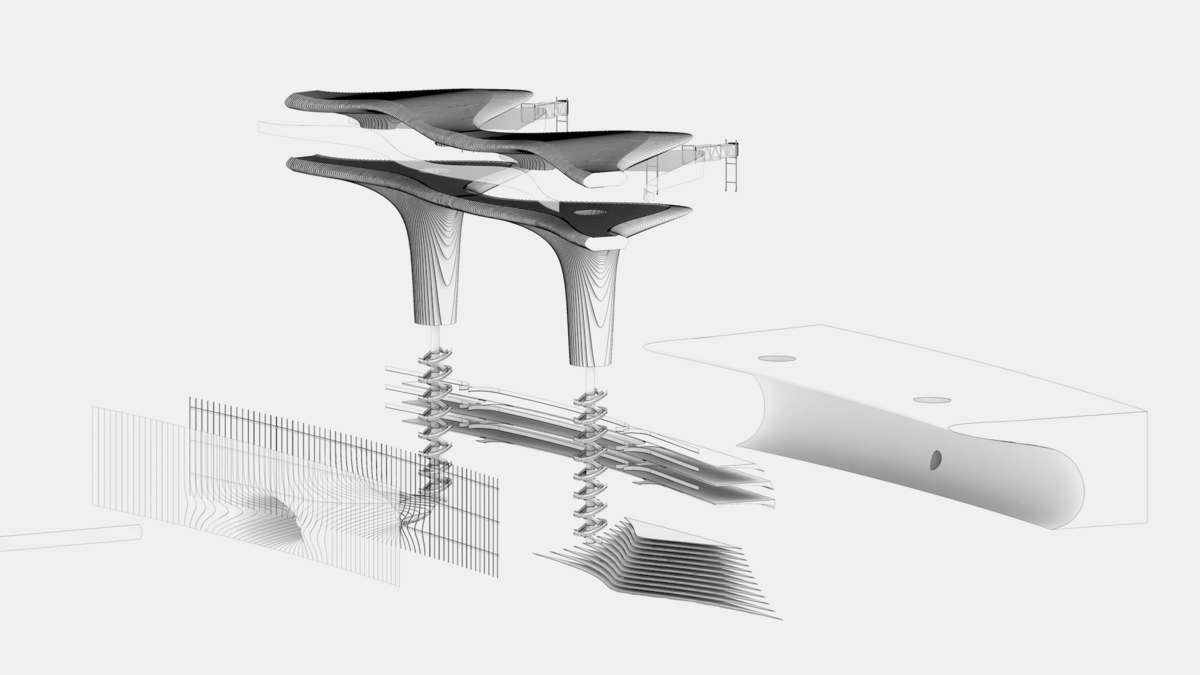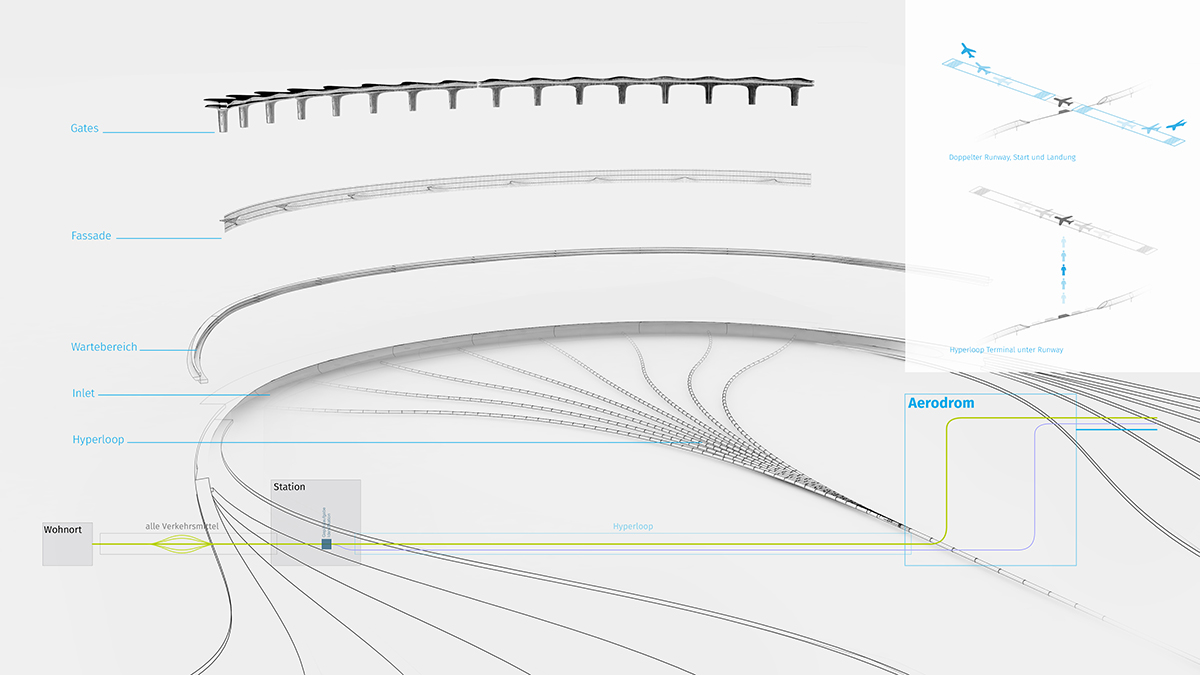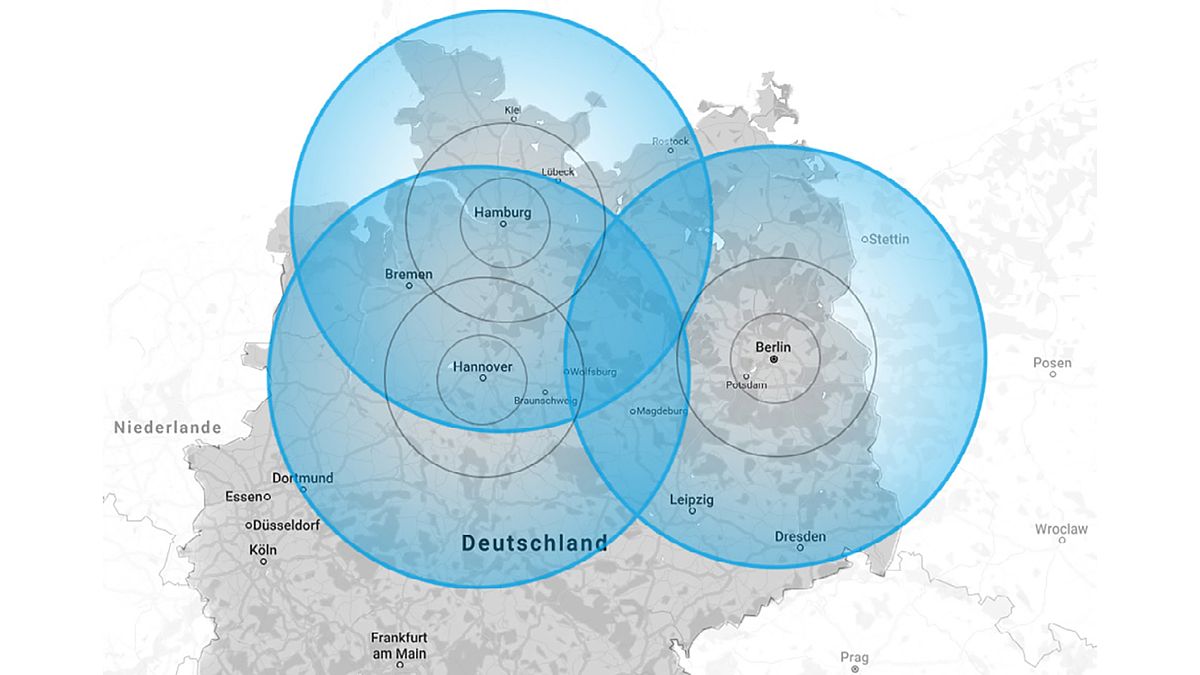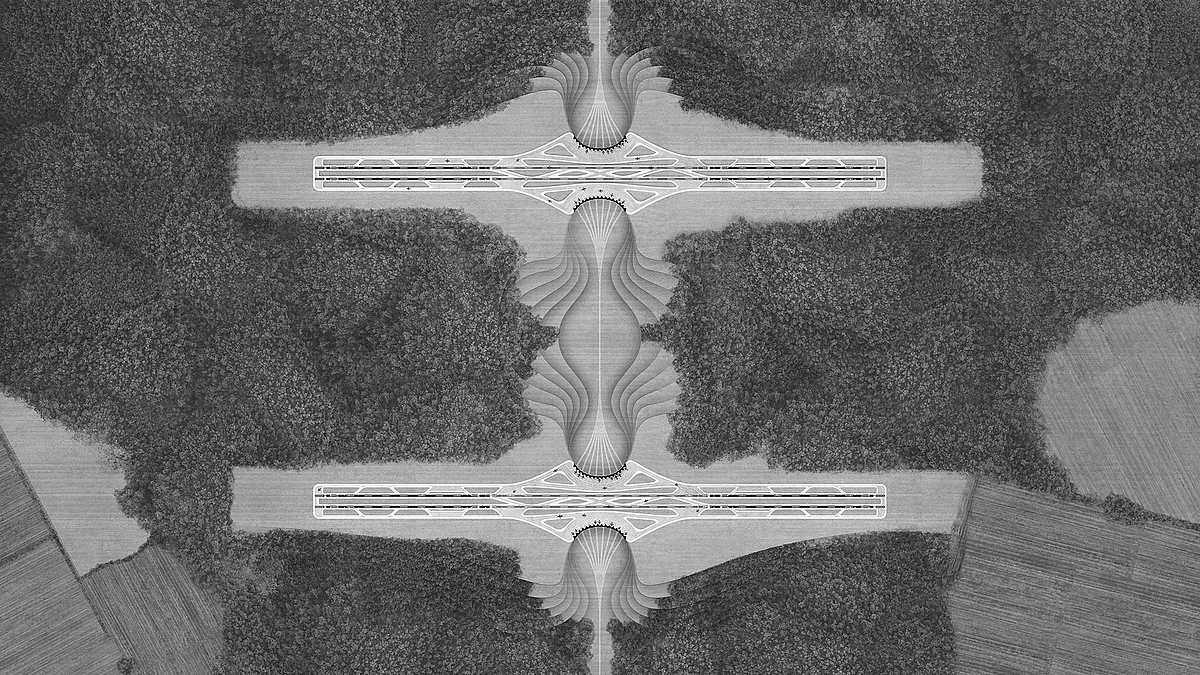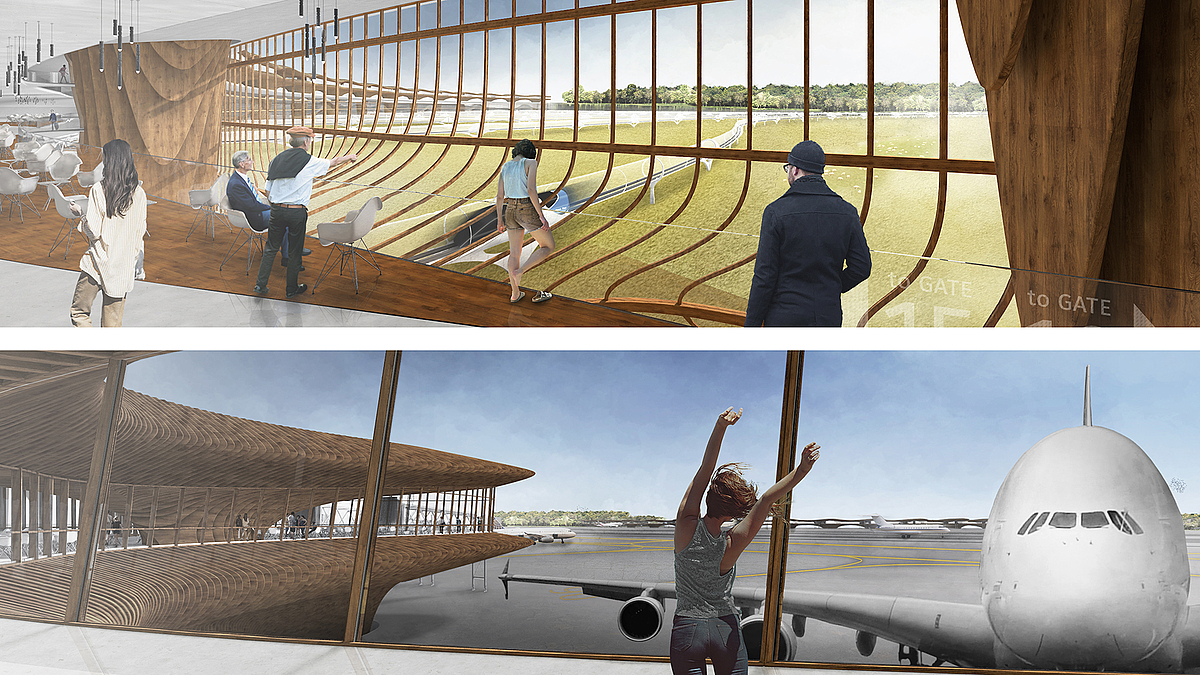Project
The three airports in Berlin, Hamburg and Hanover will be replaced by a new joint airport. This airport is located in such a way that it can be reached from these cities in about 15 minutes via a Hyperloop network. The Hyperloop Airport will have a capacity of approx. 65 million international passengers per year and will be comparable to San Francisco (SFX). The study shows what positive effects the upcoming change of mobility can have on urban development and the experience of travel.
Hyperloop is the principle of a high-speed rail transport system in which carriages mounted on linear motors reach a travel speed of up to 1,200 km/h in a partially evacuated tube. Since 2013, the Hyperloop initiative is developing the technology with standards that are not subject to general use. The potential of the technology lies in achieving travel speeds almost similar to those of flying, but with 80% less energy consumption. For Europe, this would mean that a comprehensive Hyperloop network could almost completely replace intra-European air traffic and that airports like the Hyperloop Airport could serve non-European flights only.
The Aerodrom of the Hyperloop Airport is located in the Salzwedel-Stendal-Wittenberge region. Check-in, security and baggage handling take place in the municipal Hyperloop terminals. From there pessengers travel in a destination-specific Hyperloop cabin, which stops directly at the departure gate. The airport has four terminals, each with 16 gates and 8 Hyperloop platforms. They are vertically connected to the respective departure areas.
The merging of the airports of Berlin, Hamburg and Hanover and the relocation to a region away from metropolitan districts leads to energy synergies and a significant reduction of aircraft noise in urban regions. The exclusive development of the airport by means of rail-bound transport significantly reduces individual traffic. The home-to-gate travel time is significantly shortened and can be less than one hour. Large areas of urban growth are freed up on urban airport sites. With the proposed timber construction method, the design of the terminal buildings breaks new ground in the large-scale use of renewable building materials.
The study fits into the research focus on Habitats of the Future at the Faculty of Architecture and Landscape Sciences. In the phase of preliminary research, the idea of a joint airport for Berlin-Hamburg-Hanover is tried to be presented as realistically as possible. Rough assumptions were made in many areas. The aim is to create a plastic basis on which this concept can be comprehensively examined in all its facets.
This text was translated from German.
Info
Project Leader:
- Prof. Mirco Becker
Participants:
- Georg Theisen
- Florian Freitag
Consultants:
Max Schwitalla, Studio Schwitalla, Berlin
- Francis Aish, Foster & Partner, London
- Prof. Jörg Schröder, IES, LUH

